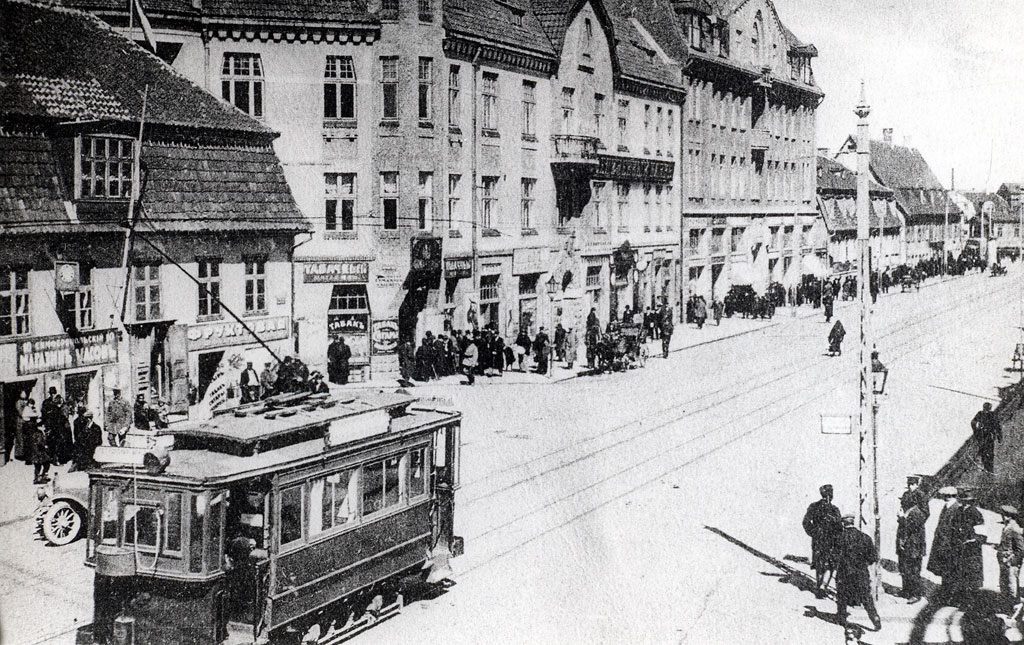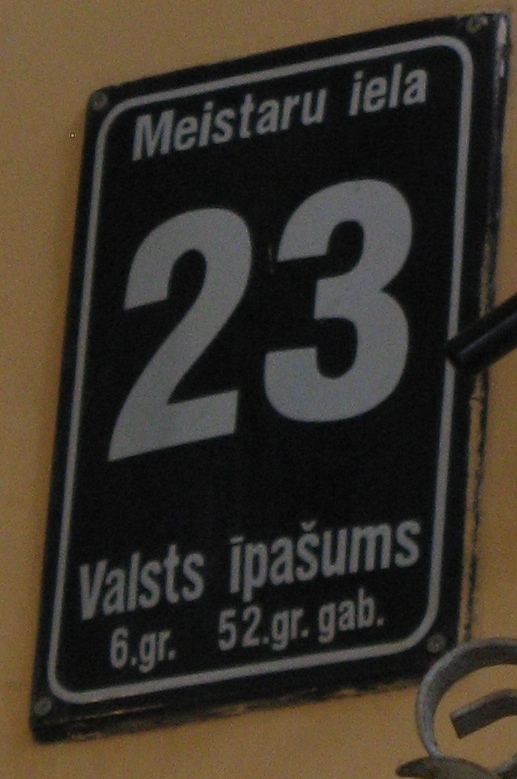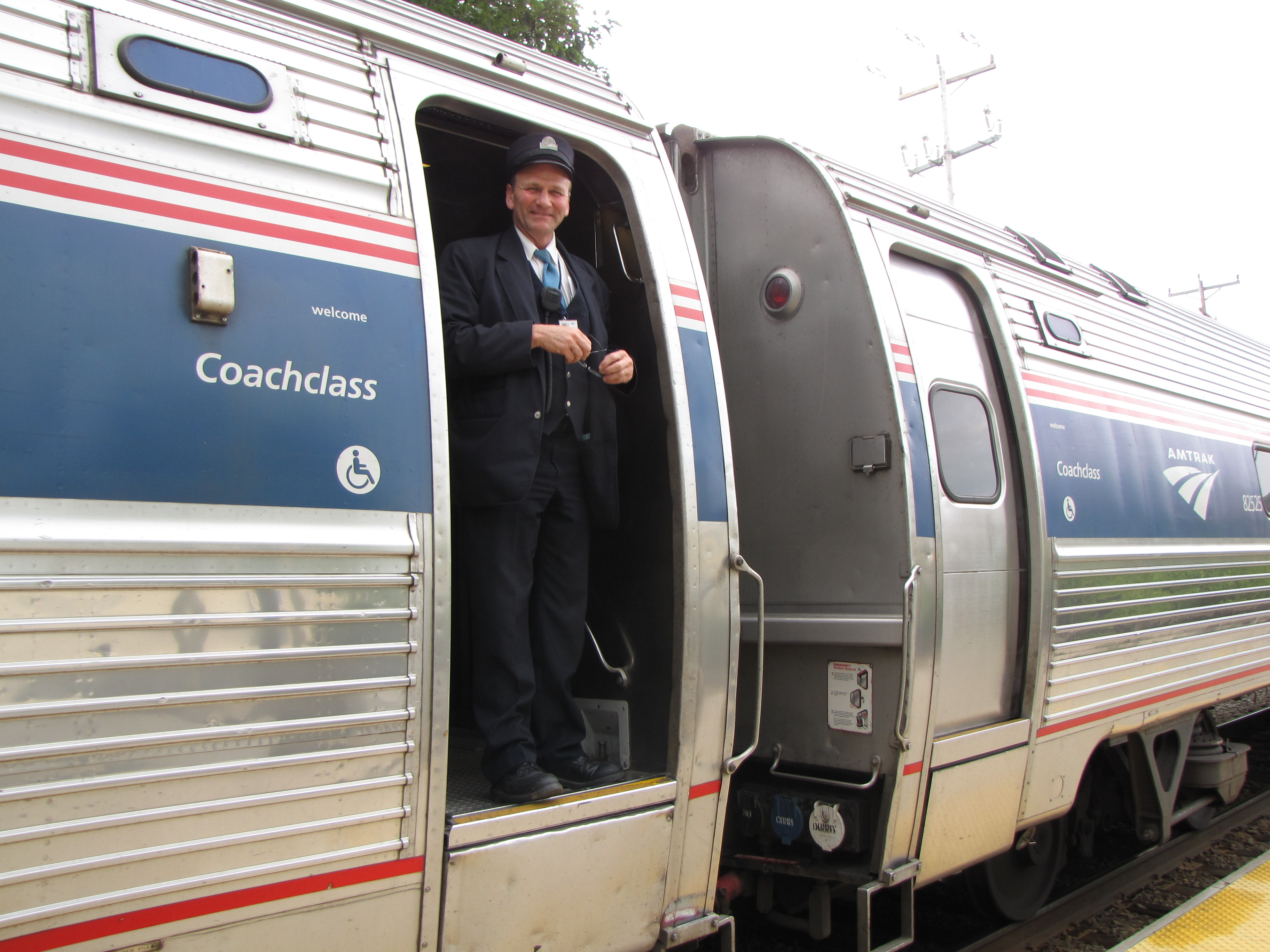|
Liepājas Tramvajs
Liepājas tramvajs is a municipal company that operates a single tram line in Liepāja, Latvia. The current double-tracked tram line has a length of . History 1899 The first electric tram line in the Baltic states was founded in Liepāja, September 26, 1899. The first nine trams used by the company were made by Herbrand (based in Köln, Germany). The first tram line was built to Karosta. 1903 In 1903 the company ordered six new trams from Herbrand. The new trams received numbers 10 to 16. 1904 Two-way tram line has been built at Liela street in the city center. 1940 After World War II the old Herbrand trams has been placed to new self-made frames. 18 March 1941 for the first time since 1899 the woman (Anna Cekuse) has become the conductor. The company starts to use tree-digit numbering, precessing tram number with 1. In 1949-1956 few trams has been built in Liepāja using the details from Kaliningrad and self-made frames. 1957 In 1957 Liepājas tramvajs h ... [...More Info...] [...Related Items...] OR: [Wikipedia] [Google] [Baidu] |
State Owned
State ownership, also called government ownership and public ownership, is the ownership of an industry, asset, or enterprise by the state or a public body representing a community, as opposed to an individual or private party. Public ownership specifically refers to industries selling goods and services to consumers and differs from public goods and government services financed out of a government's general budget. Public ownership can take place at the national, regional, local, or municipal levels of government; or can refer to non-governmental public ownership vested in autonomous public enterprises. Public ownership is one of the three major forms of property ownership, differentiated from private, collective/cooperative, and common ownership. In market-based economies, state-owned assets are often managed and operated as joint-stock corporations with a government owning all or a controlling stake of the company's shares. This form is often referred to as a state-o ... [...More Info...] [...Related Items...] OR: [Wikipedia] [Google] [Baidu] |
Conductor (transportation)
A conductor (North American English) or guard (Commonwealth English) is a train crew member responsible for operational and safety duties that do not involve actual operation of the train/locomotive. The ''conductor'' title is most common in North American railway operations, but the role is common worldwide under various job titles. In Commonwealth English, a conductor is also known as guard or train manager. The responsibilities of a conductor or guard typically include the following: * Ensuring that the train follows applicable safety rules and practices * Making sure that the train stays on schedule starting from the stations * Opening and closing power operated doors * Selling and checking tickets, and other customer service duties * Ensuring that any cars and cargo are picked up and dropped off properly * Completing en-route paperwork * Directing the train's movement while operating in reverse * Coupling or uncoupling cars * Assisting with the setting out or picking up of ... [...More Info...] [...Related Items...] OR: [Wikipedia] [Google] [Baidu] |
Rouble
The ruble (American English) or rouble (Commonwealth English) (; rus, рубль, p=rublʲ) is the currency unit of Belarus and Russia. Historically, it was the currency of the Russian Empire and of the Soviet Union. , currencies named ''ruble'' in circulation include the Belarusian ruble (BYN, Rbl) in Belarus and the Russian ruble (RUB, ₽) in Russia. Additionally, the Transnistrian ruble is used in Transnistria, an unrecognized breakaway province of Moldova. These currencies are subdivided into one hundred kopeks. No kopek is currently formally subdivided, although ''denga'' (½ kopek) and ''polushka'' (½ denga, thus ¼ kopek) were minted until the 19th century. Historically, the grivna, ruble and denga were used in Russia as measurements of weight. In 1704, as a result of monetary reforms by Peter the Great, the ruble became the first decimal currency. The silver ruble was used until 1897 and the gold ruble was used until 1917. The Soviet ruble officially replaced t ... [...More Info...] [...Related Items...] OR: [Wikipedia] [Google] [Baidu] |
Erfurt
Erfurt () is the capital and largest city in the Central German state of Thuringia. It is located in the wide valley of the Gera river (progression: ), in the southern part of the Thuringian Basin, north of the Thuringian Forest. It sits in the middle of an almost straight line of cities consisting of the six largest Thuringian cities forming the central metropolitan corridor of the state, the "Thuringian City Chain" ('' Thüringer Städtekette'') with more than 500,000 inhabitants, stretching from Eisenach in the west, via Gotha, Erfurt, Weimar and Jena, to Gera in the east. Erfurt and the city of Göttingen in southern Lower Saxony are the two cities with more than 100,000 inhabitants closest to the geographic center of Germany. Erfurt is located south-west of Leipzig, north-east of Frankfurt, south-west of Berlin and north of Munich. Erfurt's old town is one of the best preserved medieval city centres in Germany. Tourist attractions include the Merchants' Bridge (''K ... [...More Info...] [...Related Items...] OR: [Wikipedia] [Google] [Baidu] |
Gera
Gera is a city in the German state of Thuringia. With around 93,000 inhabitants, it is the third-largest city in Thuringia after Erfurt and Jena as well as the easternmost city of the ''Thüringer Städtekette'', an almost straight string of cities consisting of the six largest Thuringian cities from Eisenach in the west, via Gotha, Erfurt, Weimar and Jena to Gera in the east. Gera is the largest city in the Vogtland, and one of its historical capitals along with Plauen, Greiz and Weida. The city lies in the East Thuringian Hill Country, in the wide valley of the White Elster, between Greiz (upstream) and Leipzig (downstream). Gera is located in the Central German Metropolitan Region, approximately south of Saxony's largest city of Leipzig, east of Thuringia's capital Erfurt, west of Saxony's capital Dresden and 90 km (56 miles) north of Bavaria's city of Hof (Saale). First mentioned in 995 and developing into a city during the 13th century, Gera has historical significa ... [...More Info...] [...Related Items...] OR: [Wikipedia] [Google] [Baidu] |
Cottbus
Cottbus (; Lower Sorbian: ''Chóśebuz'' ; Polish: Chociebuż) is a university city and the second-largest city in Brandenburg, Germany. Situated around southeast of Berlin, on the River Spree, Cottbus is also a major railway junction with extensive sidings/depots. Although only a small Sorbian minority lives in Cottbus itself, the city is considered as the political and cultural center of the Sorbs in Lower Lusatia. Spelling Until the beginning of the 20th century, the spelling of the city's name was disputed. In Berlin, the spelling "Kottbus" was preferred, and it is still used for the capital's ("Cottbus Gate"), but locally the traditional spelling "Cottbus" (which defies standard German-language rules) was preferred, and it is now used in most circumstances. Because the official spelling used locally before the spelling reforms of 1996 had contravened even the standardized spelling rules already in place, the (german: Ständiger Ausschuss für geographische Namen) stre ... [...More Info...] [...Related Items...] OR: [Wikipedia] [Google] [Baidu] |
Tatra KT4
Tatra KT4 is the name of a four-axle type articulated tramcar developed by the Czech firm ČKD Tatra. The first pre-production vehicles entered service in Potsdam in 1975, with the first production vehicles in 1977. A total of 1,747 units were built, with initial deliveries to East Germany (DDR) and later to the USSR and SFR Yugoslavia. KT4 variants were built for both standard gauge and metre gauge tramways. Production of the KT4 tramcar was halted in 1991 due to worldwide economic and political changes at the time. Production was briefly resumed in 1997 to construct the last 20 units for Belgrade, Serbia. Since the start of the 1990s, many of the earliest production tramcars have gone through extensive refurbishment and rebuilding, including the replacement of folding doors and the installation of low-floor center sections. The design of the tram, being without a bogie over the joint necessitates a scissor joint connecting both bogies such that the center of mass does not sh ... [...More Info...] [...Related Items...] OR: [Wikipedia] [Google] [Baidu] |
KONČAR Group
KONČAR – Elektroindustrija d.d. is a Croatian electrical, transport and energy company based in Trešnjevka neighborhood of Zagreb, Croatia. Listed on the Zagreb Stock Exchange being constituent of CROBEX, the company consists of 16 subsidiary companies (as of 2017), employing a staff of 3,600. Annual sales account for 460 million euros, of which half are exports. During recent years, KONČAR has delivered its products and plants to more than 100 countries across all continents. KONČAR dates from 1921, when a modest but at the time highly significant manufacture of electrical motors commenced in Zagreb. The company is named after World War II resistance fighter Rade Končar. KONČAR – Catering Equipment KONČAR — Catering Equipment Ltd. is an industrial company that operates within the KONČAR Group. The company was founded in 1946 and specializes in the design, manufacture, installation and servicing of professional catering equipment. KONČAR — Catering Equipment L ... [...More Info...] [...Related Items...] OR: [Wikipedia] [Google] [Baidu] |
Ezerkrasts
Ezerkrasts is one of the largest and most modern neighbourhoods of Liepāja, Latvia. It is located near the southern border of the city, on the western coast of Liepāja lake. Ezerkrasts named so after the naming contest in 1975, in which this name was selected from 108 other variants. Ezerkrasts consists of three parts called Ezerkrasts 1, Ezerkrasts 2 and Ezerkrasts 3. Wikimapia
Wikimapia is a geographic online encyclopedia project. The project implements an interactive "clickable" web map that utilizes Google Maps with a geographically-referenced wiki system, with the aim to mark and describe all geographical objects ...
References ...[...More Info...] [...Related Items...] OR: [Wikipedia] [Google] [Baidu] |
Tatra T2-62
Tatra may refer to: * Tatra Mountains, a mountain range in Slovakia and Poland ** Tatra County, an administrative division of Poland in the region of the Tatra Mountains ** Tatra National Park, Poland, a national park in Poland ** Tatra National Park, Slovakia, a national park in Slovakia * Low Tatras, a mountain range in Slovakia * " Tatra Tiger", the nickname for the economy of Slovakia during its high growth period since 1998 * Tatra (company), a car and truck manufacturer from the Czech Republic * ČKD Tatra, a producer of trams from the Czech Republic * Tatra, Estonia, a village in Tartu County, Estonia * Tátra-class destroyer, a torpedo boat class of the Austro-Hungarian Navy * Tatra pine vole, a species of vole * FK Tatra Kisač, a football club in Serbia * Tatra, a Czech brand of milk produced in Hlinsko * Tatra, a Polish brand of beer produced by the Żywiec Brewery See also * Tatar (other) * Tartar (other) Tartar may refer to: Places * ... [...More Info...] [...Related Items...] OR: [Wikipedia] [Google] [Baidu] |



_front.jpg)


